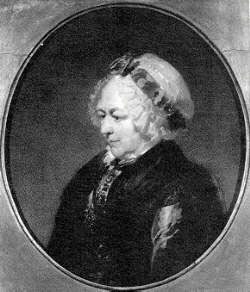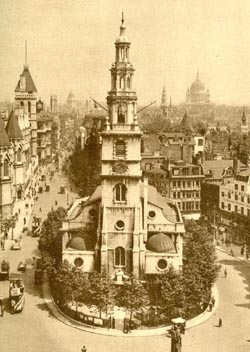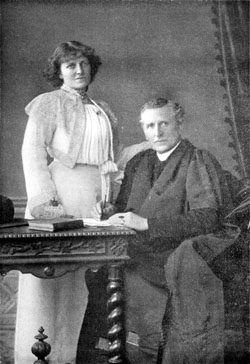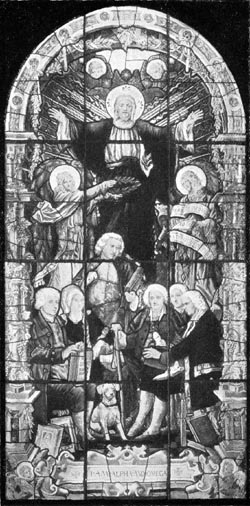From the Thorley
Archives
A Unique New Year Gift for
Thorley
The Pennington Files - Part Three
On 4th January 1798 Bishop
Porteus, Bishop of London, gave Elizabeth Carter as a gift for her nephew,
Thomas Pennington, the position of Rector of the parish of Thorley in Hertfordshire.
So began not only the long association of Rev. Thomas Pennington with our
parish that lasted 54 years but also marked the beginning of a long Pennington
dynasty that ended quite tragically at St Clement Danes, London in 1941. Philip
Hargrave, whilst researching the Pennington name in the Times Archives and
at Cambridge University Library, has uncovered some fascinating details to
add to the previous two Pennington articles.
Elizabeth Carter (1717 - 1806) was one of the most remarkable
and learned woman of the 18th century. Tutored by her clergyman father, she
taught herself ancient and modern languages, history, geography, astronomy
and mathematics. She was also most proficient in needlework and domestic science.
Elizabeth Carter rapidly gained a reputation as a poet, essay writer and translator
of Epictetus, the Greek philosopher. She made a decision not to marry so that
she could continue to study and write and remain independent. She became a
member of the 'Bluestockings' a group of likeminded, freethinking literary
women. She was praised in society circles as an example of what women could
achieve in the enlightened 18th century England. Modern feminists now acknowledge
that she made female intellectual endeavour respectable.
 |
|
A Portrait of Elizabeth Carter
|
One of her closest admirers was Dr Samuel Johnson, compiler of The
Dictionary of the English Language (1755). This association was celebrated
a century later in a window installed in St Clement Danes church in the Strand
in London. The Rector at the time was Rev. Septimus Pennington grandson of
our Rev. Thomas Pennington. In 1909 Queen Victoria's daughter, Princess Henry
of Battenburg, unveiled 'a most unconventional window' depicting Dr Johnson
surrounded by a group of five friends one of whom was Elizabeth Carter. Princess
Henry is better known as Princess Beatrice, the youngest and longest surviving
child of Queen Victoria. The Revd Septmus Pennington published a brief
history of the Church of St Clement Danes to coincide with this 'Festival
of Unveiling and Opening'.
 |
 |
 |
|
St Clement Danes - Early 1900s
|
Revd Septimus Pennington and Louie
|
Johnsonian Window
|
A second window was sponsored by The London Flower Girls and was
designed by Louie Pennington-Bickford, the rector's daughter. It was reported
that Louie took a keen practical interest in the work of the flower girls.
The Rector J.J.H. Septimus Pennington died in 1910 and he was succeeded as
Rector by his son-in-law William Pennington-Bickford. As mentioned in a previous
article, the Pennington-Bickfords gained a fine reputation for pastoral works
in St Clement Danes. William died, it is said, of shock and grief after the
church was bombed in May 1941. Recently Philip discovered a reference
to Louie's death in September 1941 which reported that she jumped to her
death from an attic window as she couldn't bear to be parted from her husband.
Thomas Pennington was instituted as Rector of St. James the
Great, Thorley on 7th February 1798. At the time of the 'gift' of the living
of Thorley he had also been rector of Kingsdowne in Kent since 1786, a parish
he retained whilst at Thorley. From 1798 until shortly before his death in
London in 1852 he made Thorley his home. He must have found Thorley a far
more attractive place to live and work. Records of the Archbishopric of Canterbury
show that in 1821 he was fined £200 for 'non attendance' at Kingsdowne. The
fine was later retracted when he claimed poverty!
Bill Hardy
December 2006
The Pennington
Files, Part Four
Return to From the
Archives
Return
to St James' Rectors